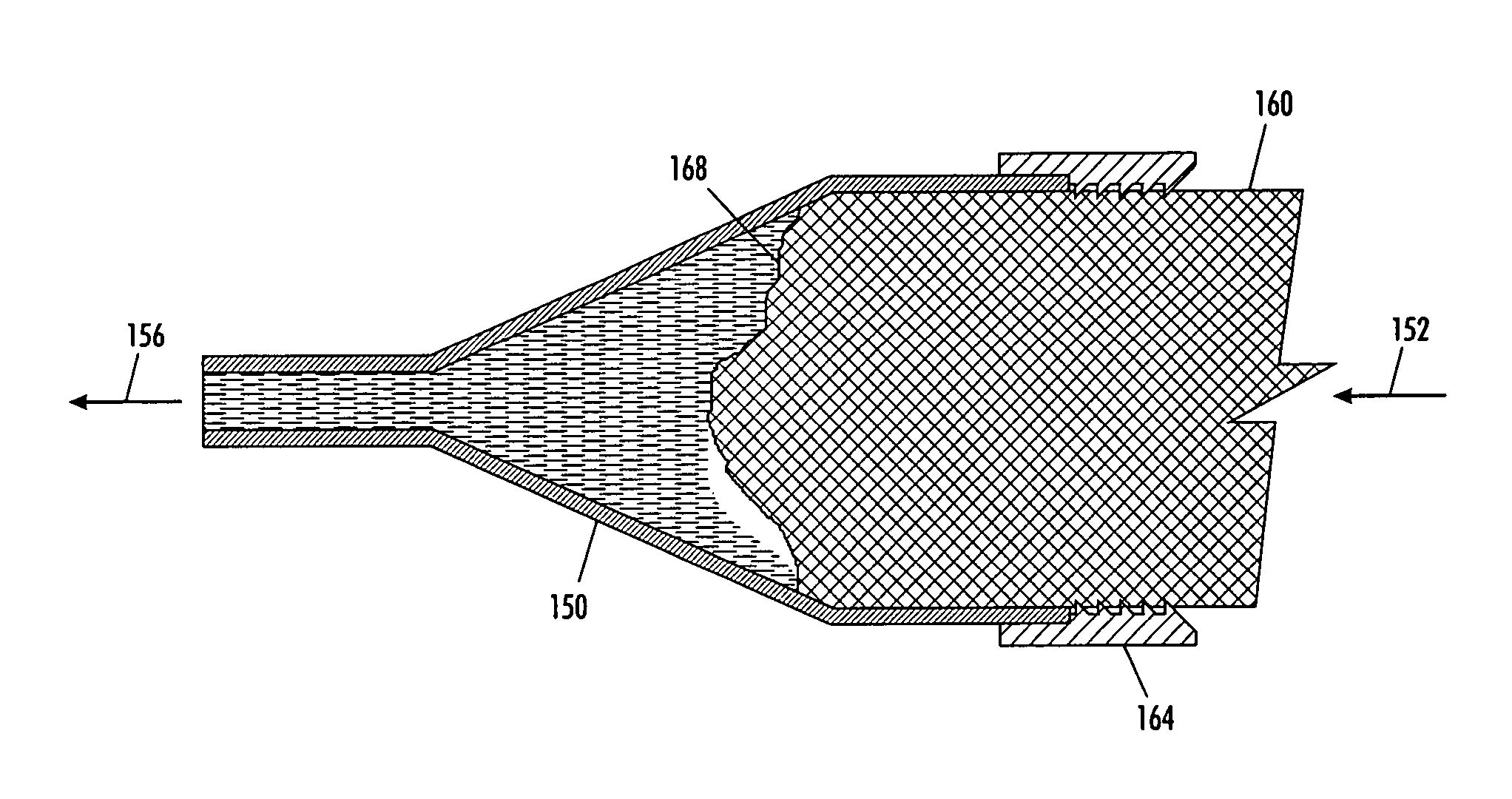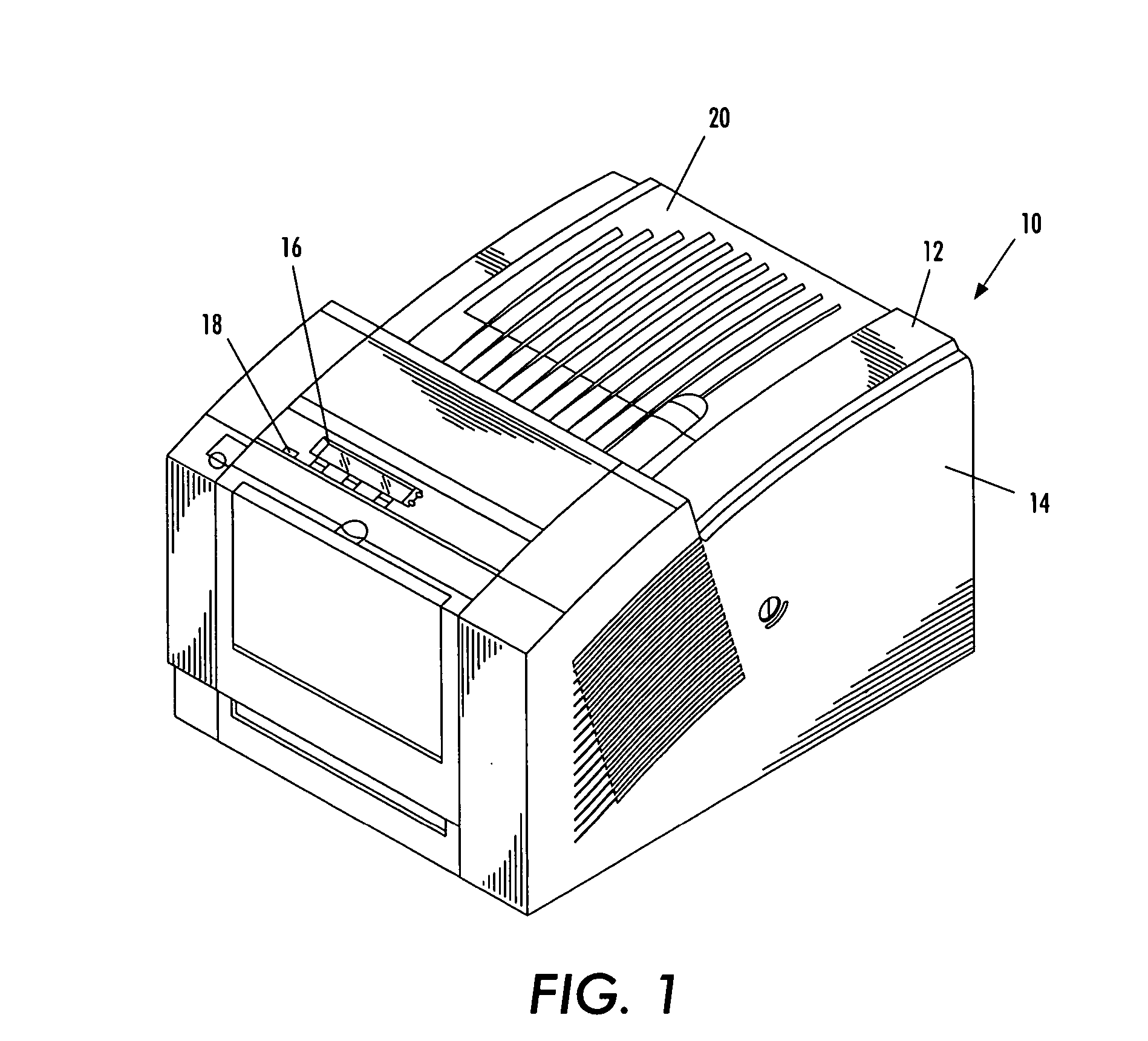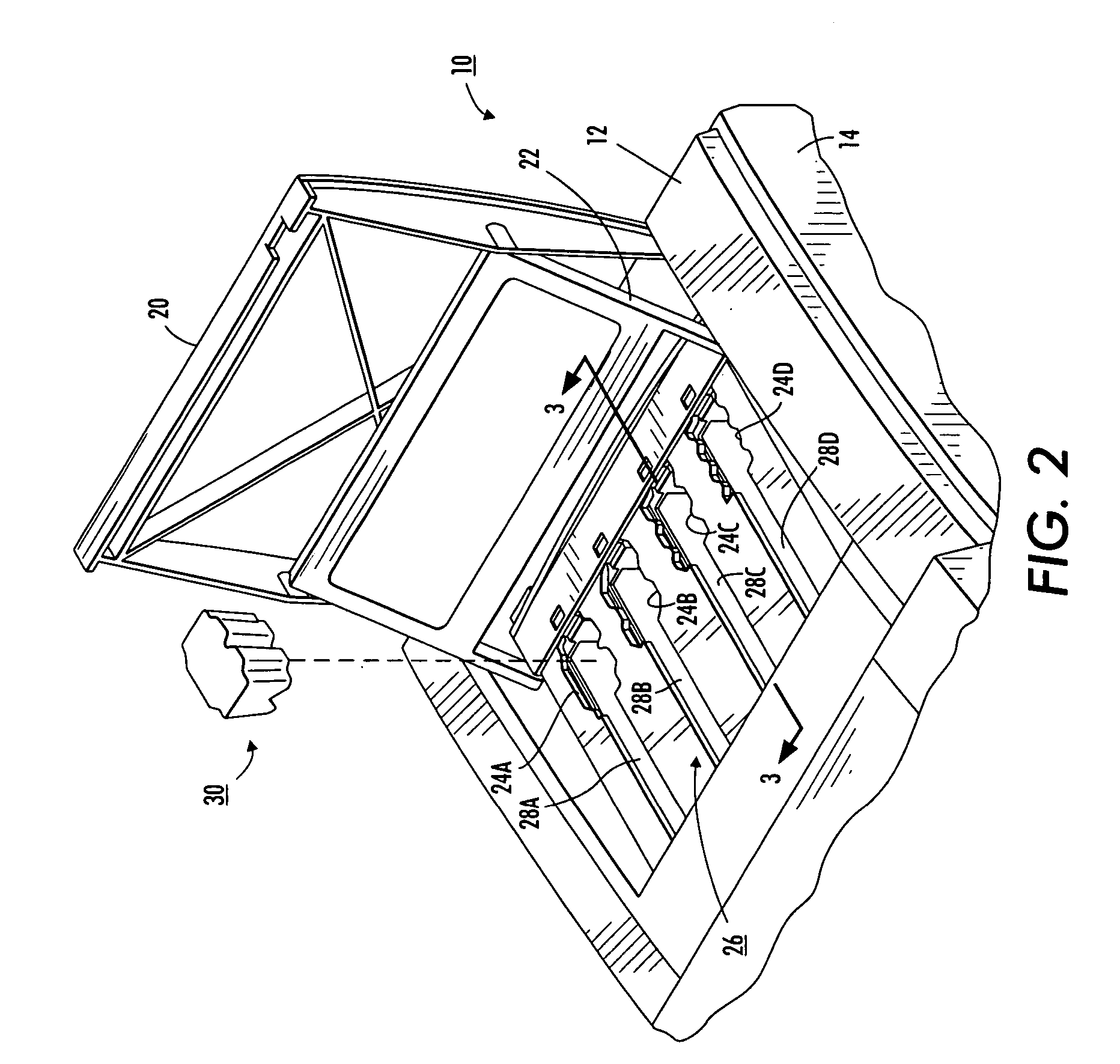System and method for melting solid ink sticks in a phase change ink printer
a phase change ink printer and solid ink technology, applied in the field of machines, can solve the problems of limiting or reducing imaging speed, increasing sensitivity to resistance and pressure in the flow path affecting the flow rate of the print head, so as to increase the flow rate of melted ink exit, reduce the melting time, and increase the pressure within the enclosure
- Summary
- Abstract
- Description
- Claims
- Application Information
AI Technical Summary
Benefits of technology
Problems solved by technology
Method used
Image
Examples
Embodiment Construction
[0021] Referring to FIG. 1, there is shown a perspective view of an ink printer 10 that incorporates a solid ink stick melting chamber that melts solid ink sticks and delivers the melted ink to a print head with sufficient pressure to overcome the fluid resistance of a filter. The reader should understand that the embodiment discussed herein may be implemented in many alternate forms and variations. In addition, any suitable size, shape or type of elements or materials may be used.
[0022]FIG. 1 shows an ink printer 10 that includes an outer housing having a top surface 12 and side surfaces 14. A user interface display, such as a front panel display screen 16, displays information concerning the status of the printer, and user instructions. Buttons 18 or other control elements for controlling operation of the printer are adjacent the user interface window, or may be at other locations on the printer. An ink jet printing mechanism (FIG. 3) is contained inside the housing. An ink feed ...
PUM
 Login to View More
Login to View More Abstract
Description
Claims
Application Information
 Login to View More
Login to View More - R&D
- Intellectual Property
- Life Sciences
- Materials
- Tech Scout
- Unparalleled Data Quality
- Higher Quality Content
- 60% Fewer Hallucinations
Browse by: Latest US Patents, China's latest patents, Technical Efficacy Thesaurus, Application Domain, Technology Topic, Popular Technical Reports.
© 2025 PatSnap. All rights reserved.Legal|Privacy policy|Modern Slavery Act Transparency Statement|Sitemap|About US| Contact US: help@patsnap.com



